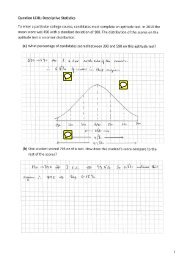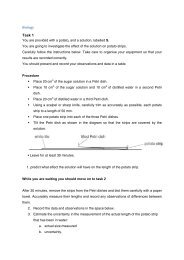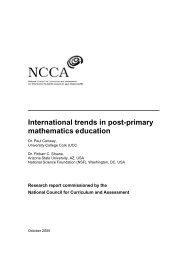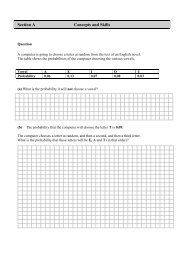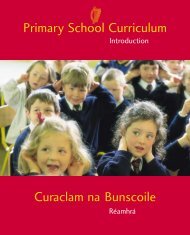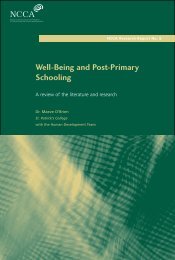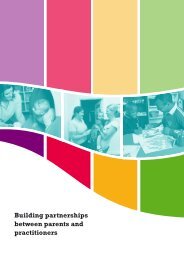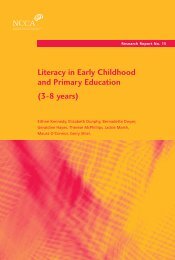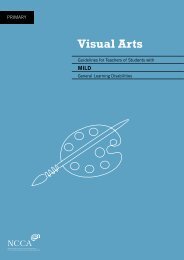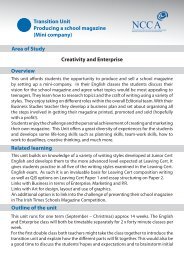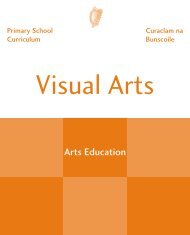Up and Away - National Council for Curriculum and Assessment
Up and Away - National Council for Curriculum and Assessment
Up and Away - National Council for Curriculum and Assessment
Create successful ePaper yourself
Turn your PDF publications into a flip-book with our unique Google optimized e-Paper software.
Types of activity<br />
Section 7 More ideas...<br />
In<strong>for</strong>mation gap<br />
Usually a pair-work activity in which one member of the pair (Pupil A) has in<strong>for</strong>mation which the other<br />
member (Pupil B) does not have.<br />
This ‘gap’ in in<strong>for</strong>mation <strong>for</strong>ms the basis <strong>for</strong> activities which provide practice in spoken interaction <strong>and</strong><br />
communication skills. Examples of this kind of activity in the book are:<br />
Colours See the visual resources on pages 120-147. Pupil A is given one picture to colour in,<br />
Pupil B a different picture. When the pair is ready, give Pupil B a blank copy of Pupil<br />
A’s picture. Pupil A now describes her/his picture telling B the colours used. B listens<br />
<strong>and</strong> tries to colour the picture in the same way. Then change roles so B describes<br />
her/his picture to A.<br />
Spot the difference See the visual resources on pages 137-140 <strong>and</strong> the corresponding instructions on<br />
page 119.<br />
Time Use the visuals of the blank clocks on page x to make a new worksheet. Give Pupil A<br />
a copy of this page <strong>and</strong> Pupil B a simple worksheet containing times in written <strong>for</strong>m<br />
– e.g. ‘1. It’s 2 o’clock. 2. It’s half past 8.’ etc. Pupil B reads the sentences to pupil A<br />
who draws the h<strong>and</strong>s on the clock faces.<br />
In the house See Worksheets A-D on pages 222-225 <strong>and</strong> the corresponding notes on page 217.<br />
Sequencing exercises<br />
This activity, which is typically used in primary education, is also important in language support. It may be<br />
carried out at different levels:<br />
Paragraph level Write each sentence of the paragraph onto a strip of paper – the worksheet on page<br />
234 has been specifically designed <strong>for</strong> this purpose. In pairs or small groups, pupils<br />
put the sentences in the correct order.<br />
Sentence level Write the sentence onto a strip of paper <strong>and</strong> cut it into individual words – the<br />
worksheet on page 235 has been specifically designed <strong>for</strong> this purpose. In pairs or<br />
small groups, pupils rearrange the words to <strong>for</strong>m the correct sentence.<br />
Jigsaw reading exercises<br />
An activity where a text is divided into sections, each section to be read by a different pupil or pair/small<br />
group. The pupils (or pairs/small groups) then pool what they have learned so the whole group comes to<br />
an underst<strong>and</strong>ing of the complete text.<br />
Note Both sequencing <strong>and</strong> jigsaw reading exercises highlight an integrated approach to second<br />
language development. Although the focus is on reading, the activities promote communication<br />
<strong>and</strong> team-working skills as pupils need to share their ideas in order to complete the task.<br />
239



